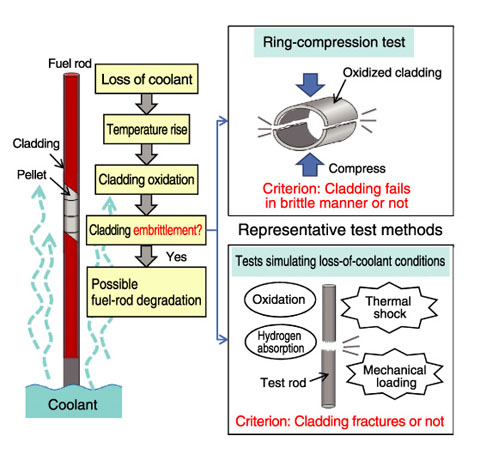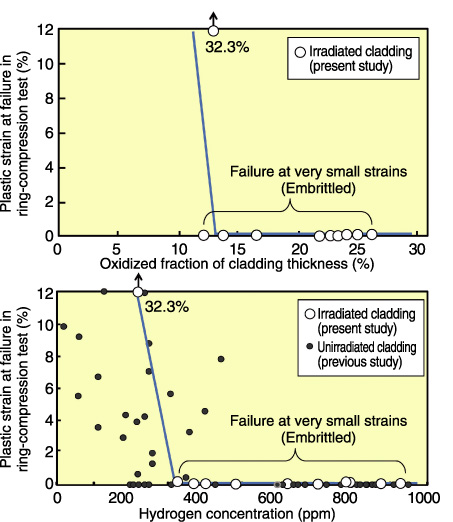
Fig.5-4 Representative test methods for evaluating fuel integrity in loss-of-coolant events

Fig.5-5 Results of ring-compression tests on cladding specimens that experienced loss-of-coolant conditions
During the operation of a nuclear reactor, the fuel temperature is below 600 K. As observed during the accident at the Fukushima Daiichi NPS, owned by the Tokyo Electric Power Company, Incorporated, the temperature rises drastically because of reduction in the reactor coolability. The fuel cladding reacts with the coolant and is rapidly oxidized above 1200 K. The severely oxidized cladding becomes brittle and may shatter due to thermal shock or mechanical loading.
Ring-compression tests on the oxidized cladding are used in the US and European countries to examine the embrittlement conditions, while tests simulating loss-of-coolant conditions are conducted in Japan to determine the fracture/no-fracture conditions of the fuel rod in relation to the cladding embrittlement (Fig.5-4). The trend toward higher fuel burnup and use of new cladding alloys has increased the need for international discussions on the test methods and safety criteria on the cladding embrittlement.
In the present study, ring-compression tests were conducted on irradiated cladding specimens, which had been tested by simulating loss-of-coolant conditions, in order to compare the two above-mentioned test methods and to consider the test methods for appropriately evaluating the fuel integrity in loss-of-coolant events.
Fig.5-5 shows that most of the specimens failed at very small plastic strains in the ring-compression tests, though they did not fracture in the tests simulating loss-of-coolant conditions. In other words, there is a discrepancy between the criteria derived from the two tests. Analytical studies showed that this discrepancy is caused by differences in the magnitude and the extent of localization of the stresses generated in the specimens during the tests.
The present results indicate that the conditions where the cladding is exposed should be taken into account to confirm the fuel integrity with scientific rationality. Moreover, considering the accident at the Fukushima Daiichi NPS, safety should be ensured during long-term cooling, including in the case of earthquakes, and handling after loss-of-coolant events. We would make contributions for establishing safety criteria and improving the reactor safety by developing test methods applicable to such post-loss-of-coolant events.